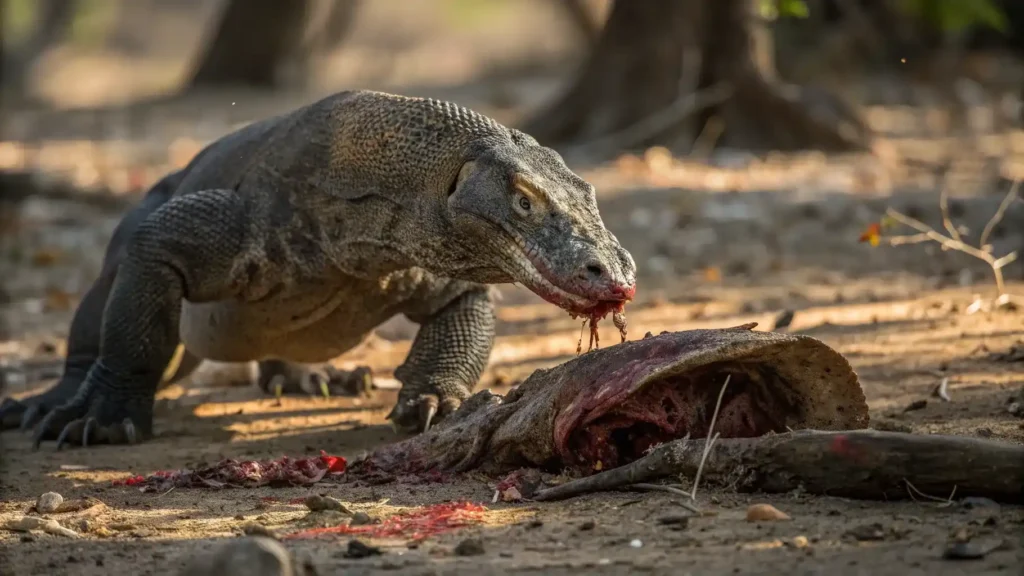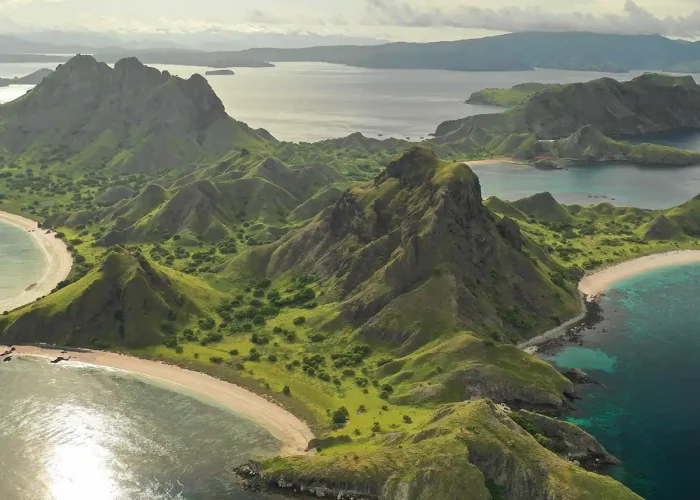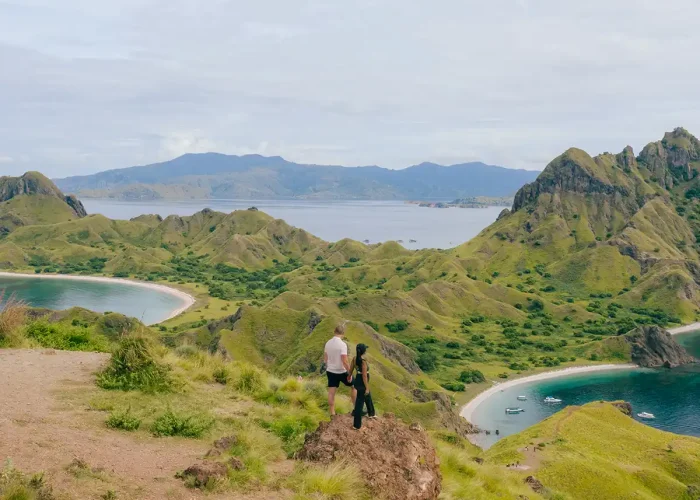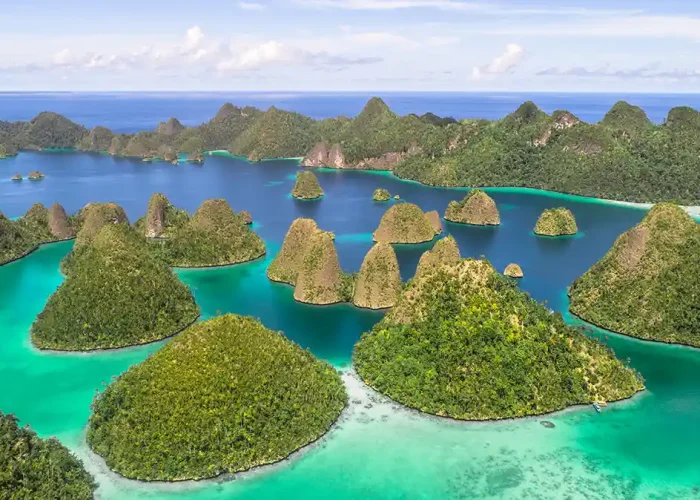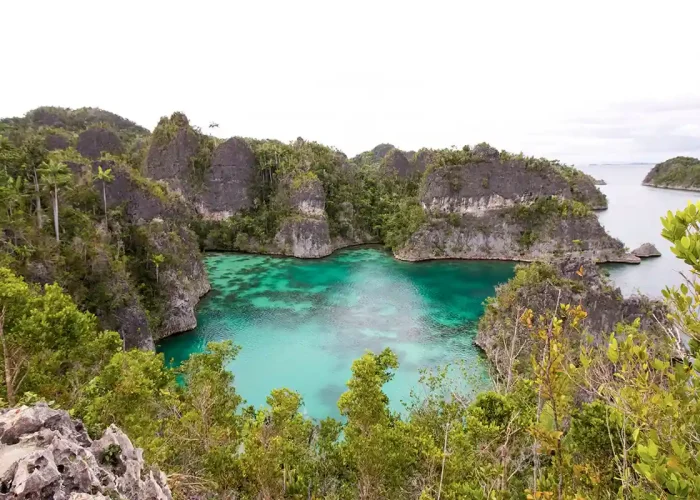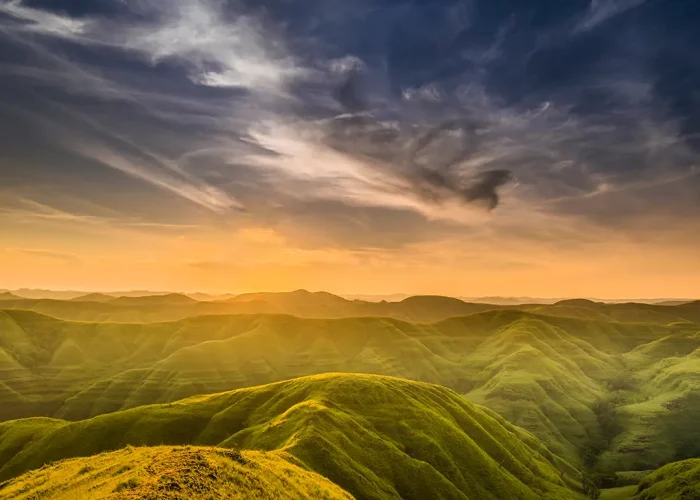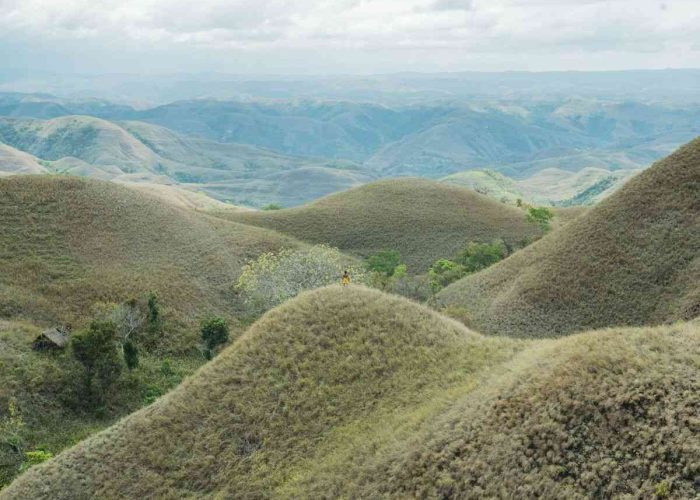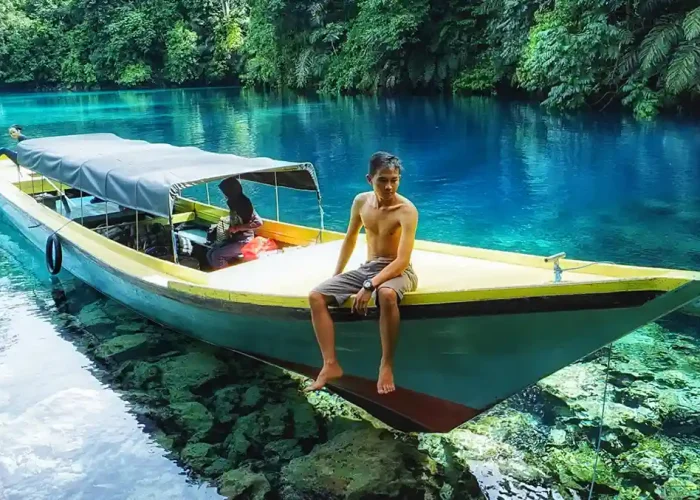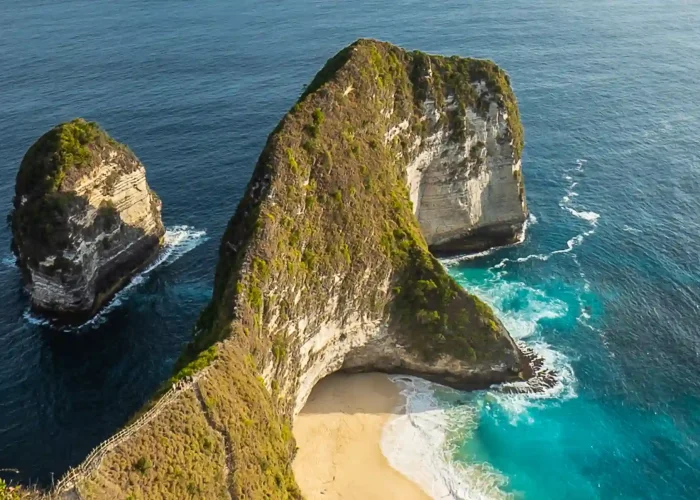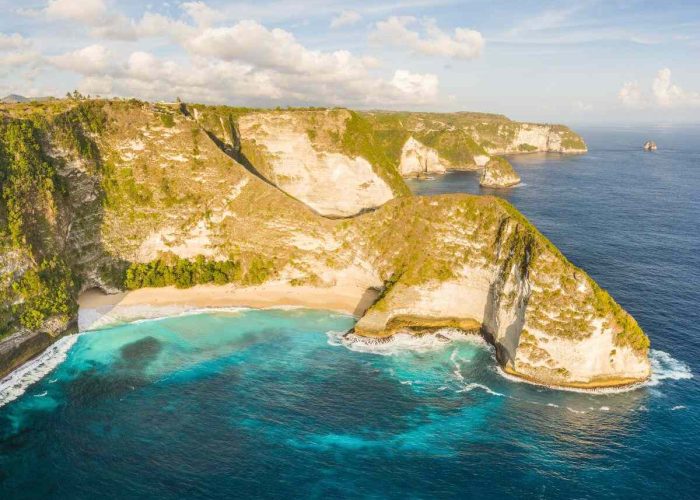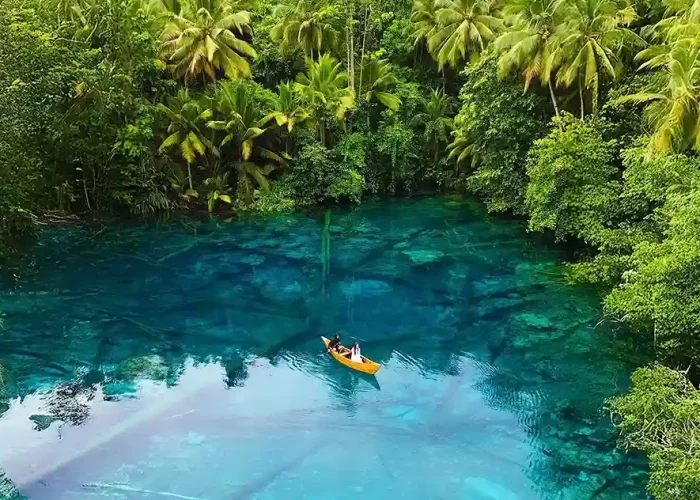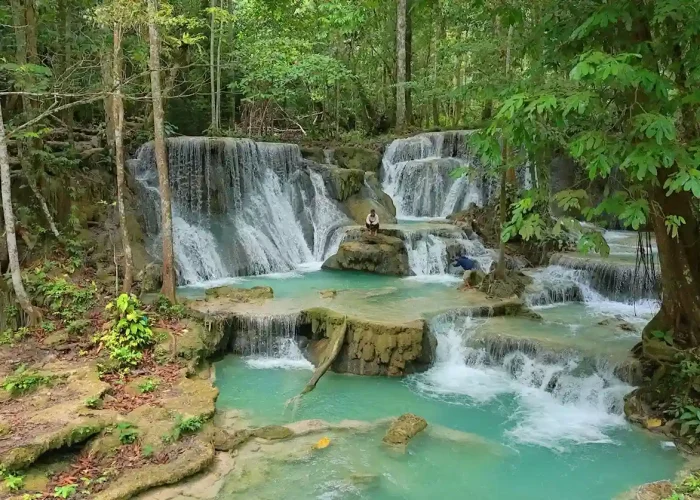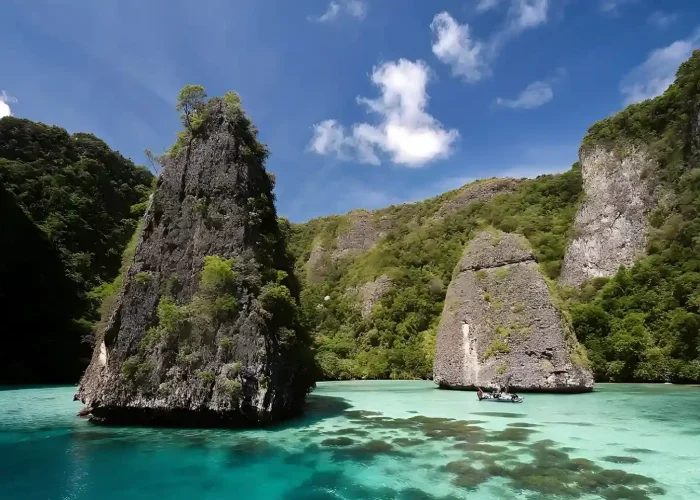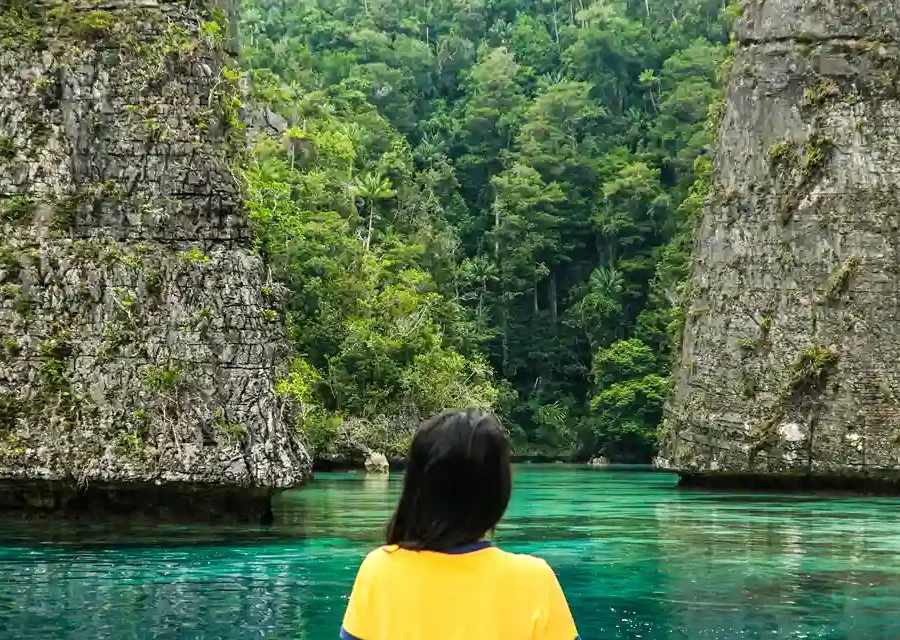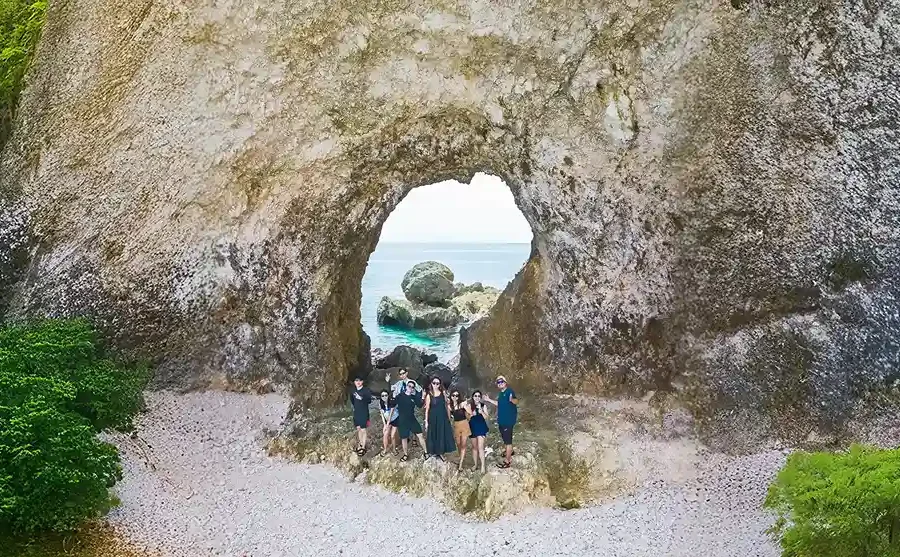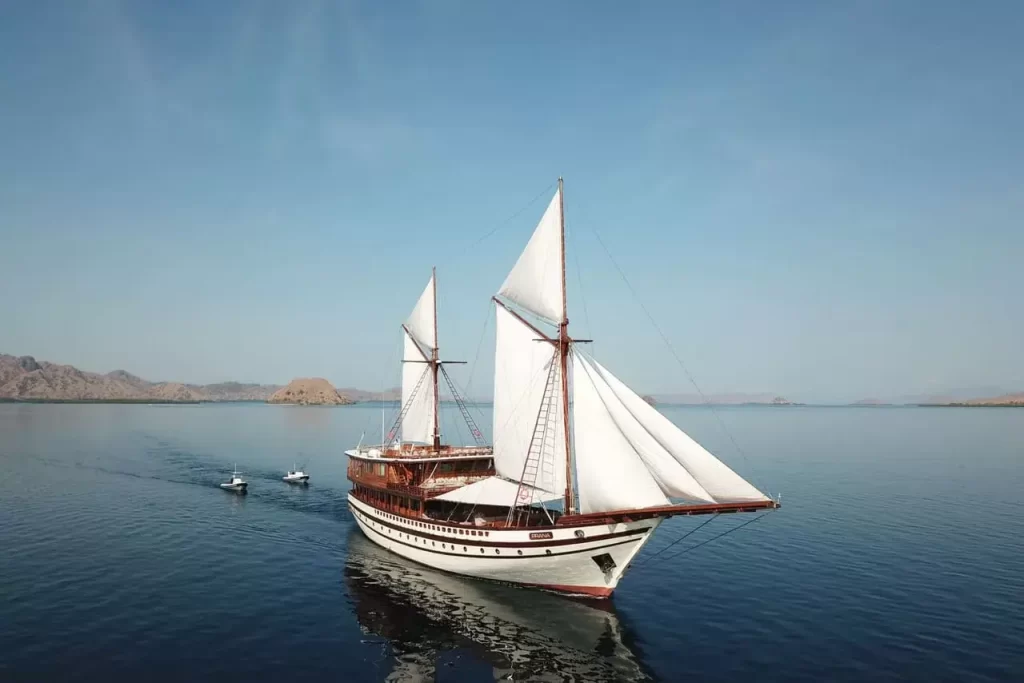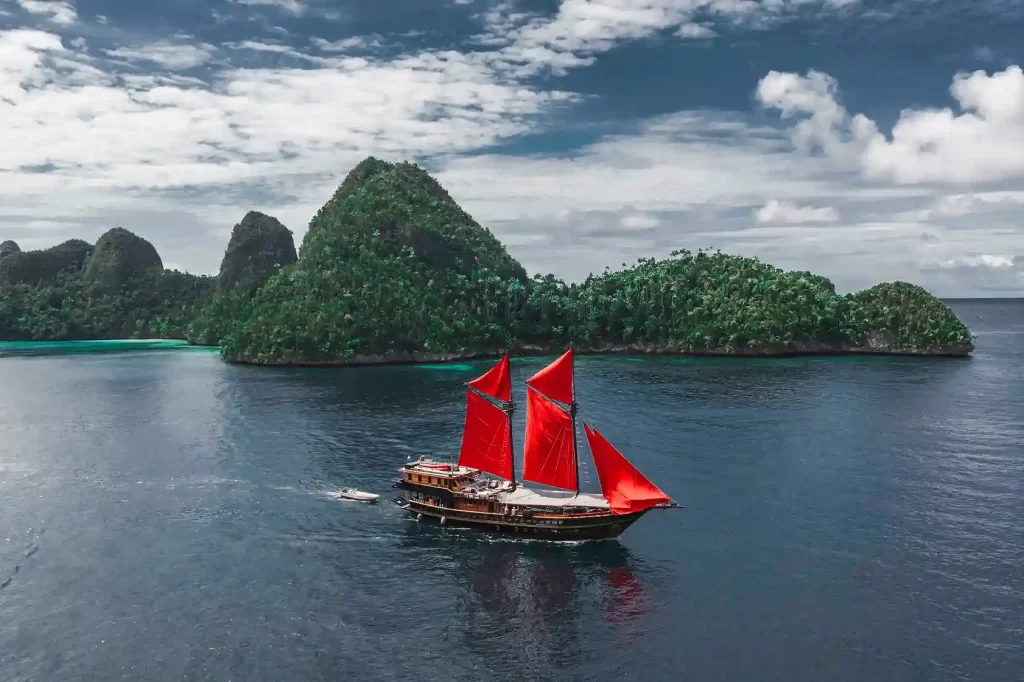Have you ever wondered what do Komodo dragons eat? These ancient creatures, found only on a few islands in Indonesia, never fail to fascinate. With their massive bodies, sharp teeth, and venomous saliva, Komodo dragons look like fearsome predators. Yet, the way they hunt and choose their food tells many interesting stories.
This article will explore everything about what Komodo dragons eat, from juveniles to adults, their hunting strategies, and their surprising habits. So, if you’re planning a visit to Komodo National Park, knowing this information can make your experience even more memorable.
Table of Contents
What Do Komodo Dragons Eat?
In general, Komodo dragons are opportunistic carnivores. This means they eat almost any kind of meat available in their habitat. From small animals and birds to large prey like deer and water buffalo, all can become their daily meals. They are also known to feed on carrion.
Interestingly, their diet varies depending on their age and body size. There is a clear difference between what young Komodo dragons eat compared to adults. Let’s take a closer look!
Juvenile Komodo Dragons
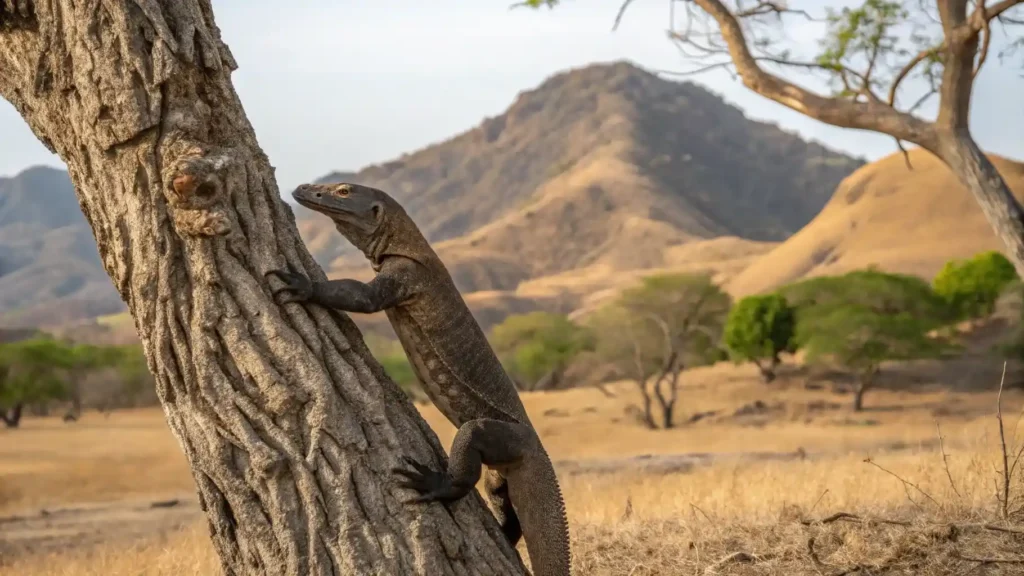
Life in the wild is not easy for juvenile dragons. They must not only find food but also avoid threats from large komodos, who might prey on them. Komodo dragons are cannibalistic and may eat smaller Komodos or other dragons, making survival even more challenging for the young. Because of this, young Komodos mainly eat insects, small lizards, small birds, and reptile eggs.
To survive, juvenile dragons often climb trees. From above, they are safer and can access small prey that is easier to catch. This diet shows that even from a young age, Komodo dragons already possess strong survival instincts.
Young dragons also learn to hunt using simple hunting strategies, such as stalking and ambushing small prey. As they grow, their hunting skills develop further, making childhood a crucial learning phase for securing food.
Adult Komodo Dragons
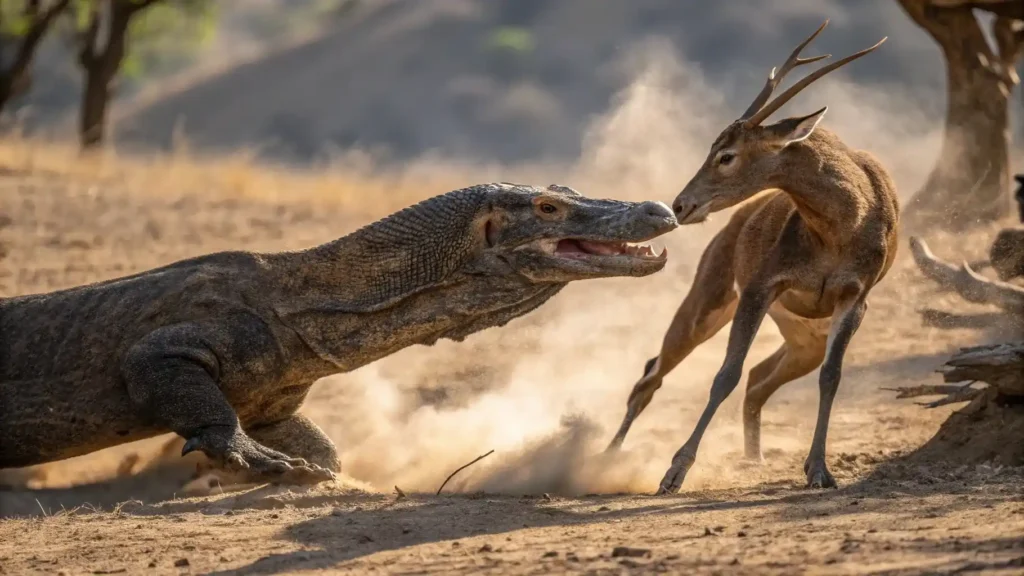
Once they grow larger and stronger, their diet changes drastically. Adult Komodo dragons can hunt much bigger animals, including most mammals living in Komodo National Park. Their prey includes wild pigs, water buffalo, long-tailed monkeys, Timor deer, Rinca rats, and civets. The main food source for adult Komodo dragons is Timor deer. With their serrated teeth and venomous saliva, adult Komodos can immobilize their prey with a single bite.
Interestingly, adults have a slow metabolism, so they don’t need to eat every day. In one meal, they can consume up to 80% of their body weight. For example, a 70-kg Komodo dragon can eat about 50 kg of meat in a single sitting. After a big feast, they can survive for several weeks without food. This eating pattern makes adult Komodo dragons the apex predators of their ecosystem, with no other animals daring to challenge them except humans.
Read more: How Komodo Dragons Reproduce? Explore Their Unique Process Here!
How Komodo Dragons Hunt
You might wonder how these seemingly slow-moving dragons can take down large prey. The answer lies in their smart hunting strategies. Komodo dragons live in harsh environments where patience and strategy are key for survival. They usually creep slowly until they are close enough to strike. This hunting strategy is based on stealth and ambush, allowing them to approach their prey without being noticed. When the moment comes, they attack with a swift venomous bite. The wound is dangerous not only because of their serrated teeth but also due to their komodo dragon saliva and harmful bacteria. Prey escapes can happen, but often the bite weakens the animal within hours or days.
If the prey is large, such as wild boars, the Komodo doesn’t rush to finish it. Instead, it follows the injured animal until it collapses. Other smaller komodo dragons or large adult dragons may then arrive, and they often share a large meal with other Komodo dragons. This hunting technique shows that Komodos are patient, efficient, and well-adapted predators in the wild, and it gives a clear picture of the diet komodo dragons rely on to thrive. They have perfected ways to kill prey even when it seems difficult.
Komodo Dragons and Carrion
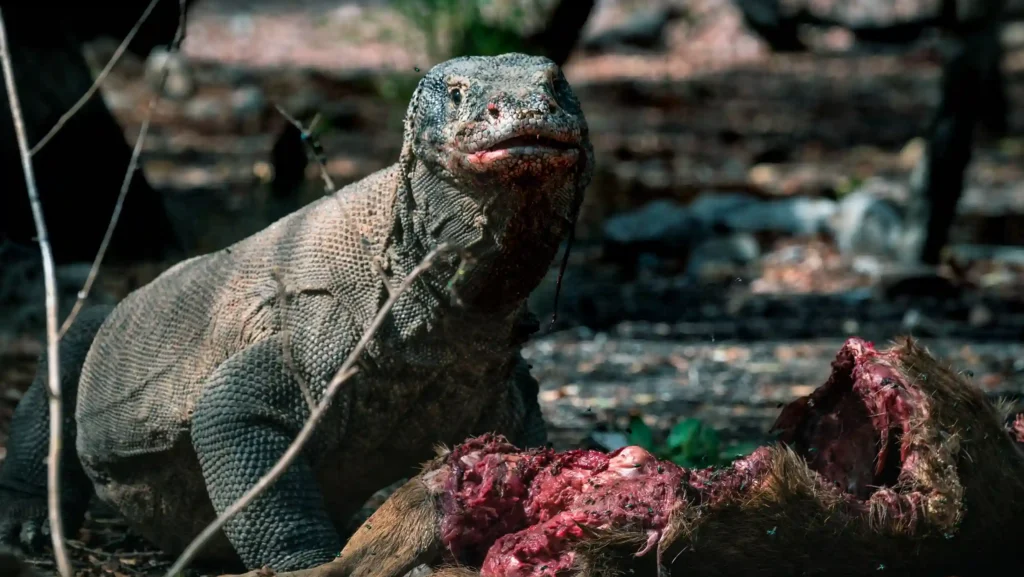
Besides hunting live prey, Komodo dragons are also scavengers. They can detect the smell of dead animals from up to 5 kilometers away using their forked tongue, which is sensitive to blood scent. This habit plays an important role in the ecosystem. By consuming carrion, Komodos help prevent the spread of disease in the wild. Imagine if carcasses were left to pile up, it would disrupt the natural balance.
So, although it may sound frightening, Komodo dragons act as natural “cleaners” in their habitat. This is one reason why they are considered intelligent ancient animals and essential for the ecosystem.
The Role of Komodo Dragons in the Wild Food Chain
Komodo dragons occupy the position of apex predators in Komodo National Park. They have no natural predators other than humans, making their role vital in maintaining ecological balance. Their food chain can be divided into several levels:
- Producers (Plants)
The vegetation on Komodo Island serves as the main energy source for herbivores. These plants form the base of the food chain, supporting the entire ecosystem of the islands. - Primary Consumers (Herbivores)
Herbivores like Timor deer, wild pigs, and water buffalo are the main prey of adult Komodo dragons. Additionally, Komodos sometimes opportunistically hunt smaller animals, such as long-tailed monkeys, Rinca rats, and civets, especially younger dragons or when larger prey is unavailable. - Secondary Consumers (Komodo Dragons)
As apex predators, Komodos regulate herbivore populations to maintain balance. By preying on most mammals in their habitat, they prevent overgrazing and help preserve vegetation. Their role makes them essential natural guardians of the ecosystem.
Through this food chain, Komodos not only survive but also play a crucial part in sustaining ecological balance. Losing an apex predator like the Komodo would disrupt the entire ecosystem, from herbivore populations to plant availability.
Tips for Observing Komodo Dragons in Komodo National Park
Seeing Komodos in their natural habitat is thrilling, but you must prioritize safety. These large predators can react quickly if threatened, so following some basic guidelines ensures a safer and more enjoyable experience.
Here’s what you can do:
- Keep a Safe Distance
Make sure not to approach too closely. Komodos can attack quickly if they feel threatened, so rangers usually advise maintaining at least a 10-meter distance. This way, you can observe them clearly without risk. - Follow Ranger Instructions
Always stay under the supervision of a ranger. They are experienced in understanding Komodo behavior and know how to keep visitors safe. By following their guidance, you can enjoy this natural spectacle with peace of mind. - Do Not Provoke Komodos
Avoid sudden movements, loud noises, or attempting to feed them. Komodos may respond aggressively, so let them move naturally without interference. - Be Aware of Your Surroundings
While focusing on Komodos, pay attention to the terrain and other Komodos nearby. Staying alert helps you avoid risky situations and observe them comfortably. - Join a Tour with a Trusted Operator
The best way to enjoy this experience is by joining an official tour with a reputable operator like IndonesiaJuara Trip. With professional guidance, you’ll not only stay safe but also enjoy full facilities, learn more about Komodo dragons, and create unforgettable moments during your journey.
By following these simple tips and joining a trusted tour, you can experience meeting Komodo dragons safely, respectfully, and memorably.
Read more: When Is the Best Time to See Komodo Dragons? Must-Know Info for Travelers!
It’s Time to See Komodo Dragons in Person with IndonesiaJuara Trip!
Now you know the answer to the question “what do Komodo dragons eat”. From juveniles to adults, they play a key role in maintaining ecosystem balance. Besides hunting live prey, they also feed on carrion, acting as natural “cleaners” in Komodo National Park. If you want to see how Komodos live in their natural habitat, it’s time to join a Labuan Bajo Tour with IndonesiaJuara Trip. Not only will you meet these incredible creatures, but you can also sail on a Phinisi boat, snorkel in crystal-clear waters, trek to exotic islands, and enjoy world-class natural scenery. So, what are you waiting for? Plan your adventure now with IndonesiaJuara Trip!


